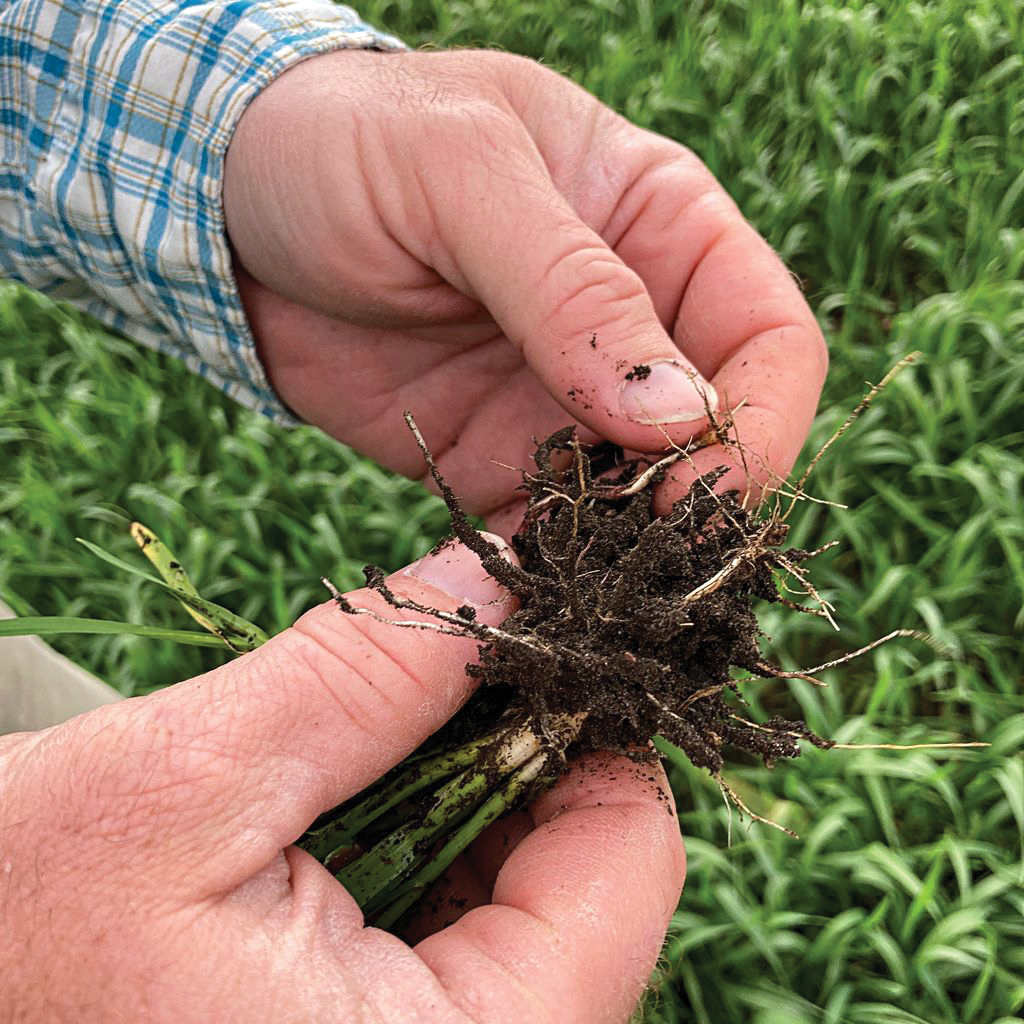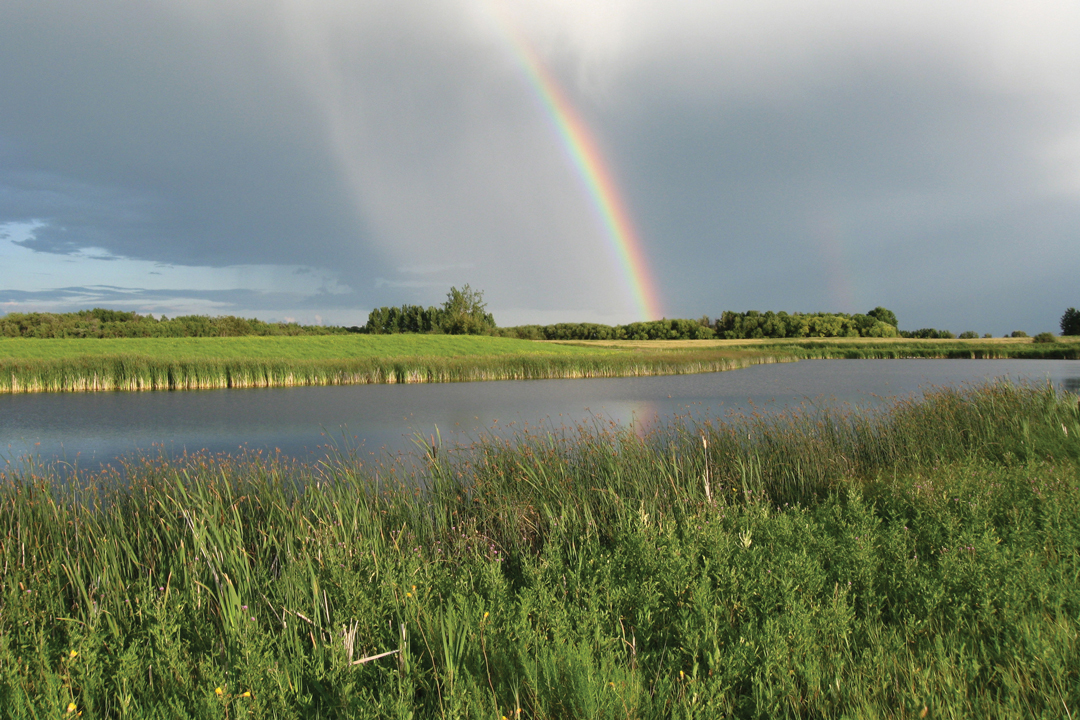THE WORM HAS TURNED
BY LAUREN COMIN • PHOTO BY DARIEN DESCHNER
There are many things farmers don’t want to see in their bins. Fusarium and mealworm beetles are certainly on that list. While finding either in stored grain is a terrifying prospect, creepy-crawly mealworm larvae may prove to be a welcome ally.
Fusarium head blight (FHB) has moved westward across the Prairies and established itself in Alberta. Wheat and barley crops infected by Fusarium graminearum and other species of this plant pathogen suffer yield and quality losses and mycotoxin deoxynivalenol, or DON, can build up in infected grain.
Researchers at the University of Saskatchewan’s department of Animal and Poultry Science see opportunity in using the wriggly pest to create value from DON-contaminated grain. In a recently published study, Fiona Buchanan and her colleagues looked at accumulation of DON in mealworm larvae reared on high-DON Fusarium-infected grain. The work was inspired by a coffee break conversation about a small European study and the growing issue of FHB in Western Canada.
The amount of DON an animal can tolerate in its diet depends on the species. When livestock such as pigs and cattle are fed high-DON wheat, the negative results can be severe. DON toxicity can manifest as reduced feed intake and performance as well as reduced immune function. Poultry tends to have the highest tolerance and swine the lowest. Buchanan found mealworms tolerate high-DON grain surprisingly well, and this discovery could have benefits for animal protein and grain production.
Buchanan fed the mealworms a diet of wheat containing up to 12 ppm of DON. This is seven ppm higher than what is allowable in chicken feed. The mealworms readily ate the infected wheat and had a high survival rate regardless of the level of DON concentration. More importantly, Buchanan found all diet groups had a similar average daily weight gain. The worms on high-DON diets didn’t suffer from low growth seen in traditional livestock. After 30 days of feeding, the detectable DON in the bodies of even the highest DON worm group was 0.2 ppm. This is below the maximum allowable level for chicken and cattle feed, which is 5 ppm, and even human consumption, which is 2 ppm.
Mealworms are a popular protein source in some areas of the world, but Buchanan and her team aren’t suggesting we replace the beef in our chili with the insect just yet. At 50 per cent crude protein and 35 per cent fat, mealworms make excellent feed for chickens and the fish species raised in aquaculture facilities.
Buchanan and her collaborators are working on a broiler chicken feeding trial to add to existing data. It is intended to confirm there are no negative effects of feeding DON-contaminated wheat-reared mealworms to the birds. Although chickens are naturally omnivorous and will consume insects, Canadian Food Inspection Agency (CFIA) approval would be required to feed these toxin-tackling mealworms to the birds.
Buchanan envisions insect-rearing facilities across the Prairies, allowing farmers with highly contaminated grain to receive some profit for their crops. What is now a waste product and a disposal-issue could generate profit. “We are taking something with no value and giving it a value,” said Buchanan. “The mealworms are essentially a perfect protein source and would likely cost less than soya bean meal or fish meal.” Growing mealworms as a feed ingredient is very sustainable, with a high feed-conversion and almost zero water requirements.
In addition to gathering data for CFIA approval, Buchanan and collaborators are now looking at potential uses for the mealworm waste, or frass, which does contain low levels of DON, but not Fusarium. Curious about how mealworms could detoxify DON, they are also studying the insect’s metabolism and microbiome.
Lauren Comin is Alberta Wheat Commission and Alberta Barley director of research.







Comments